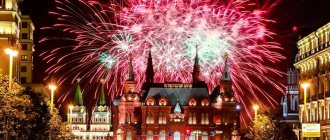When is Halloween in 2021: date and features of the celebration: Unsplash Halloween is one of the oldest holidays in the English-speaking world, which has gained immense popularity among different nations. It is celebrated at the end of October on the night before All Saints' Day. How do you celebrate a holiday that is covered in myths and legends?
Halloween date in 2021
In 2021 (and every year), Halloween is celebrated on the night of October 31st to November 1st. This is the eve of the Catholic holiday - All Saints' Day.
October 12, 6:21
What happy changes will the end of Saturn retrograde in October 2021 bring?
On October 11, Saturn got rid of retrograde. Astrologers considered this event auspicious. Of course, now a month of good luck and positive changes awaits us
Halloween Traditions
Over the several centuries of its existence, the Halloween holiday has acquired numerous traditions and rituals.
Home Decoration for Halloween
In Western countries, the house and yard for Halloween are decorated not only with pumpkins and candlesticks, but also with various “horror” attributes. Artificial webs and paper bats are especially popular. From the same material you can cut out silhouettes of ghosts or a witch flying on a broom.
Halloween Costumes
Halloween costumes are a relatively new concept. The Scots first wore them at the end of the 19th century. It was from this time that children not only begged for sweets, but did it in bright themed outfits. In Ireland and England, this tradition appeared at the beginning of the 20th century.
We recommend: How to dissolve hair in a bathroom drain: 5 methods
The first carnival costumes of Scottish children depicted characters from the other world: monsters and ghosts.
Modern Halloween costumes go on sale as early as August. Their main theme is supernatural beings and evil spirits. On Halloween, people dress up as the following characters:
- witches;
- skeletons;
- monsters;
- vampires;
- mummies;
- werewolves.
Begging for sweets
A distinctive feature of Halloween is traveling from house to house and begging for sweets. Initially, this tradition was associated with Christmas. But gradually, even on Halloween, poor children in Ireland and Great Britain begged for alms in the form of “spiritual cakes.” If the owner treated the petitioners, they prayed for the souls of his deceased relatives.
This tradition is still relevant today.
How to celebrate Halloween
The biggest Halloween celebration takes place in the USA and Canada, RIA Novosti reports. In these countries, record amounts of candy are sold on the holiday, and in Los Angeles and New York, bright, colorful festivities and carnivals take place on Halloween night.
The most famous attributes of Halloween are jack-o'-lanterns, evil spirits costumes, and caroling - begging for sweets under the motto "trick or treat."
In Russia, Halloween traditions are gradually being adopted. However, in our country, this holiday encounters serious resistance from the religious and conservative part of society because of its history, meaning and gloomy attributes.
Traditions and rituals of the holiday
An important attribute of the holiday is the Jack-O-Lantern (a pumpkin with cut-out eyes and a mouth, with a candle inside).
An integral part of Halloween are costumes that embody ideas about evil spirits. They are saturated with black and red colors, made in the form of robes - robes with a hood. Images of vampires, ghouls, and witches are popular. It is also customary to dress up as movie characters or famous personalities and ask for treats.
Children go from house to house and beg the owners for sweets.
Fortune telling is common on Halloween. Girls throw an apple peel behind their backs and, by the appearance of the fallen peel, predict the first letter of the name of their future spouse. Women go up the stairs backwards, hold candles in front of the mirror, trying to see the facial features of their betrothed.
On this holiday, dishes are prepared with the main ingredient - apple: caramel, syrup, toffee, sweets in the form of corn. Barmbrack bread is baked - an Irish flour product with raisins and grapes. Peas, sliver, coins, ring and cloth are added to the dough. The future is predicted using an object that comes across. Peas mean that you shouldn’t wait for a quick wedding, a sliver means troubles in the family, a coin means prosperity, a ring means a quick wedding, fabric means lack of money.
In many cities around the world, scary attractions are organized on this holiday. In Ireland there are fireworks displays, in Japan there are parades.
In Russia, Halloween is popular among students. On this day, entertainment venues hold themed events.
History of Halloween
It is believed that the history of Halloween comes from the ancient Celts, from the pre-Christian era. On the night of November 1, the tribes living in England, Ireland, Northern France, and the Celts celebrated the beginning of winter and the onset of the new year.
According to legends, on the night from October 31 to November 1, otherworldly creatures could sneak into the world of the living. This night was called Samhain or Samhain. The Celts saved themselves as best they could: they extinguished the fire in their houses, put on animal skins, and the Druids sacrificed animals.
At the beginning of our era, the traditions of the Celts and Romans mixed. A few centuries later, with the final advent of Christianity, All Saints' Day began to be celebrated on November 1. And the eve of the Catholic holiday became overgrown with pagan traditions, and as a result, the two holidays merged into one in the minds of many people. The name says All Saints' Eve, and the traditions are not even a little Christian.
06 October, 6:21
Which countries celebrate Halloween?
All Saints' Day is celebrated in the UK, Ireland, France, Spain, USA, Canada, Australia, New Zealand, Mexico, Austria, China, Japan and many other countries. For most countries, this holiday is not authentic, but it was accepted and is now celebrated along with England, Ireland, and Scotland.
Ireland
How is Halloween celebrated in Ireland? On the eve of All Saints' Day, the Irish try to finish work early and go home so as not to encounter the spirits that roam the streets. To scare away evil forces, they decorate houses and put up Jack-o'-lanterns. Children dress up in costumes of monsters and evil spirits, scare neighbors and ask for sweets. The adults set the table and put out a few extra utensils for the spirits.
France
How is Halloween celebrated in France? In France, where Samhain was previously celebrated, residents view All Saints' Day favorably. On Halloween (October 31), it is customary to organize costume parades. Children and adults dress up as monsters. The images of Napoleon and Marie Antoinette are extremely popular.
Which countries celebrate Halloween: Unsplash
Mexico
How is Halloween celebrated in Mexico? Mexicans celebrate the Day of the Dead, which coincides in content with All Saints' Day. They visit the graves of the deceased and hold dinners with songs and dances right in the cemeteries. It is believed that on this day you can see your deceased relatives if the family remembers them. In Mexico, it is customary to decorate houses with photographs of deceased relatives and serve their favorite dishes and drinks.
USA
How is Halloween celebrated in the USA? Although Ireland is considered the birthplace of the holiday, it gained real popularity thanks to the Americans. People here fell in love with Halloween back in the 19th century and began to actively celebrate it. Special traditions were formed: pumpkin carving and going from house to house asking “Trick or Treat?”, pumpkin pie for dinner. In America, it is customary to prepare various horror dishes - cookies in the form of cut-off fingers, jelly with imitation eyeballs, cupcakes “with blood” and more.
Japan
How is Halloween celebrated in Japan? In Japan, the holiday coincides with a national festival honoring deceased ancestors called Obon. It lasts three days, during which lanterns, light bulbs, and candles are lit in Japanese homes. They strive to fill their homes with light so that the deceased can find them and see the living. The celebration ends with a large bonfire, in which everything bad and dangerous is burned. The Japanese start the new year with a pure heart and aura.
China
How is Halloween celebrated in China? In China, this holiday is known as Teng Chieh, but its essence remains the same - to honor the departed and meet their souls. Photos of the dead are placed in houses, and water and food are placed near them. It is customary to place small gifts in the house for the deceased. At this time, in monasteries they make “boats of fate” out of paper and then burn them. The smoke is supposed to help souls reach heaven.
Halloween is widely celebrated across different continents. In Europe and the USA, it is more associated with fun than religion, and is accompanied by costume parties. In Latin America, the celebration combines local traditions with modified Celtic ones, as in Asian countries. Despite all the differences, the eve of All Saints' Day is an occasion to touch the mystery of life and honor the dead.
Original article: https://www.nur.kz/leisure/holidays/1881044-kogda-hellouin-data-kak-otmecat/
Interesting Facts
Some interesting facts about Halloween that not everyone knows:
- One of the symbols of the holiday of evil spirits is the full moon. But on All Hallows' Eve, the full moon is rarely seen. In Russia, it was seen in the sky in 2001, and on the next Halloween in 2020. In 2021, you shouldn't expect a full moon on this night either - it falls on October 20.
- On Halloween, girls can tell fortunes in the name of their betrothed. There are many rituals for finding a husband. According to one of them, a girl should stand in a dark room facing a mirror, holding a lit candle in her hands. In the reflection, she can see the face of her future spouse.
- Black cats aren't the only symbols of Halloween. Owls have long been endowed with a mystical essence. In the Middle Ages, they believed that these birds had the abilities of witches.
Halloween generates profits for stores second only to those from Christmas sales.
The holiday, which previously did not require any special preparation, is now celebrated on an impressive scale. The main expenses fall on costumes and decoration of the lawns in front of the house and the homes themselves, and decorative garlands. It is estimated that spending on Halloween is around $7-9 billion. In terms of expenses, this holiday is second only to Christmas.
This is interesting. The average American, depending on age and gender, spends between $75 and $95 each year on Halloween. With this money, US residents buy masks, toys, and treats.
Harry Houdini died on October 31, 1926.
It is symbolic that the famous illusionist, who became famous for his complex tricks, died on Halloween. Harry Houdini's career was built on his ability to survive in almost hopeless situations. This skill was considered by many to be truly supernatural.
The magician's death was due to peritonitis. It was provoked by a blow to the stomach that Harry received while performing a stunt. The magician did not contact the doctors, as a result of which he died suddenly.
Halloween phobia
The fear of Halloween has its own official name: Saminophobia. A strong fear of this holiday causes panic attacks in some people. There are several other phobias associated with Halloween:
- Wiccaphobia (fear of witches);
- coimetrophobia (fear of cemeteries);
- Phasmophobia (fear of ghosts).
The first Jack-O-Lanterns weren't made from pumpkins.
Today, the jack-o'-lantern is the true orange symbol of Halloween. But lamps were not always made from this fruit. Traditionally, turnips were used for this purpose in Scotland and Ireland. Emigrants who arrived in America gradually began to use pumpkin, since this fruit on Novaya Zemlya was the most accessible and easier to cut.
A quarter of all candy sold in the US each year occurs on Halloween.
The United States is the leader in sales of Halloween candy. According to estimates, Americans spend about $2 billion a year on the purchase of various candies, chewing gum, and other sweets.
Halloween is one of the most mysterious, but at the same time fun holidays of pagan origin. In English-speaking countries, the celebration of All Saints' Day is accompanied by colorful competitions, carnival parades and all kinds of entertainment. Every year, Americans spend enormous amounts of money on themed outfits and treats. In Russian-speaking countries, the holiday is also gradually gaining popularity, despite the cool attitude of the Orthodox Church towards it.
History of Halloween
Modern Halloween is the incarnation of the ancient Celtic calendar festival of Samhain, which was one of the four key events of the Wheel of the Year. According to ancient Irish beliefs, the dark, “night” half of the year begins on November 1. Samhain is its twilight, epilogue, the antipode of May Beltane, which marks the beginning of the light period.
These beliefs reflect the Celtic ideas about the cyclical nature of life, ideas about the loss and restoration of strength by nature, dying in the fall and rebirth in the spring. Samhain rituals are associated with understanding death and the other world, with summing up, completing things, with what in agricultural practices is called “harvesting.”
Analogue in Russia
In Rus', for many centuries, there has been its own version of the described games - pre-Christmas carols. In the same way, the young and playful dressed up in various costumes and held festivities in the streets, mixed with caroling. Music and songs flowed throughout the area, irritating the older generation. Whoever remembers Gogol’s immortal work “The Night Before Christmas” will understand what we are talking about. But despite all this madness, the next day there was a pure holiday, a sign of the cleansing of this world from evil - the coming of Christ. Again, vivid symbolism. In any case, good triumphs over evil.
“People were not afraid of demons, but of the arbitrariness of power.” Why doesn't Halloween take root here?
In October, witch hats, pumpkins and toy skeletons appear on store shelves, but not everyone needs them. In Russia, people learned about Halloween in the 1990s, but in 30 years the holiday has not really taken root with us, unlike, for example, Valentine’s Day. Let's find out why.
Useful Mela newsletter twice a week: Tuesday and Friday
SUBSCRIBE
The word "Halloween" (yes, it's spelled with an "e") is a shortened form of the full name of the holiday, All Hallows' Eve. This holiday itself appeared long before Europe became Catholic: back in the Middle Ages, on October 31, the Celts celebrated the pagan holiday Samhain. It marked the last harvest and the onset of winter - a time of evil and darkness. Druid priests sacrificed animals to the gods and predicted the future; people jumped over fires to purify themselves with fire. It is because of the ancient Celts that Halloween is called “the night of the dead,” since it was then believed that people who broke sacred taboos die on Samhain.
After the Celtic tribes adopted Christianity, Pope Gregory I urged missionaries not to fight pagan holidays, but to gradually replace them with Christian ones. So Samhain after some time became All Saints' Day. And after that, the British brought the Halloween holiday to the USA along with their belongings, where it was supplemented with carnival costumes, candy, Jack-o’-lanterns and finally took shape as a cultural phenomenon.
What do we have? Although in Rus' it was also customary to carol in costumes, tell fortunes at Christmas time and jump over bonfires on the night of Ivan Kupala, in Russia many have ambivalent attitudes towards Halloween: this holiday is not recommended to be celebrated in schools and they even tried to prohibit it by law. And surveys from different years show that the majority of Russians know about the holiday, but less than 10% celebrate it. And there are several reasons for this.
Still from the film "Viy". 1967
Difference of cultures and traditions
In Russia there is no and never has been a tradition of horror as such. The most terrible books in the USSR were Gogol's stories, Pushkin's "The Queen of Spades", Leonid Andreev's "The Abyss", Odoevsky's "Town in a Snuffbox", Bulgakov's banned novel "The Master and Margarita" and various science fiction (especially the Strugatsky stories). And although literary scholars can talk for a long time about the category of fear in Chekhov’s “The Black Monk,” Alexei Tolstoy’s “The Ghoul,” Dostoevsky’s “The Brothers Karamazov” and other works that contain mystical elements, each of these stories and novels is just a flirtation with the horror genre.
After the fall of the Iron Curtain, a flood of films, books and games about vampires, witches, the living dead and other evil spirits poured into Russians. We even had a culture of Goths - people who walked through cemeteries, were interested in mysticism, the afterlife and various pagan rituals. At the same time, interest in the books of Lovecraft and Edgar Poe grew, and the novels of Stephen King began to gain popularity. Foreign authors now have Russian-speaking imitators, and an entire Association of Horror Authors has started working. In Moscow, St. Petersburg and other large cities, they began to organize themed parties and meetings, film clubs and lectures on works of this genre. But the peak of popularity quickly passed.
Why don’t horror traditions take root particularly well on Russian soil? We are accustomed to the fact that art should reflect and highlight social issues.
Russian-language authors most often do not have the goal of scaring for the sake of simply scaring. Fear is not a goal, but a tool that helps lead to reflection. Actually, this is also why in Russia Stephen King is read so well, and not anyone else, because in his novels the heroes constantly find themselves in situations of difficult moral and moral choice. Writer Dmitry Bykov in one of his lectures said that King does not scare with monsters - he holds the reader’s attention by playing on his basic fears “about a life lived in vain, a lonely old age, an unexpectedly betrayed friend.”
The second problem is unrealism. A significant part of the canons of horror cannot be transferred to Russian reality
Most of us don't have basements or attics. In our history there were not as many sectarians and serial killers as in the United States. And the concepts of “inviolability of private property” and “invasion of privacy”, on which most American horrors are based, are not close to Russians: many of us were raised in Soviet traditions, where everything is common, and every 50th Russian still lives in a communal apartment, where neighbors do not always respect each other’s personal boundaries. Therefore, it is quite difficult for us to relate ourselves to the heroes. “If I moved to such a huge house as the heroine of this book, I would simply give the monsters a room,” we reason.
We don't understand why we should be afraid of clowns, skeletons and witches (except that Lady Gunn causes us some concern). Perhaps, if the Soviet government had not fought against “heresy,” we would now be afraid of the brownies, goblins, and watermen who are closer to us, but many years of propaganda of dialectical materialism have done their job. Religious mysticism with demons and devils moved into the category of fairy tales, and the chthonic Baba Yaga and Koshchei the Immortal, whom peasants feared to the point of goosebumps, were turned into harmless old forest dwellers by writers and artists of the 20th century.
Anthropologists Alexandra Arkhipova and Anna Kirzyuk in their book “Dangerous Soviet Things” collected stories that frightened citizens of the USSR in the 20th century. Among them are stories about poisoned needles, sweets and chewing gum with glass, killer doctors, glowing carpets with Mao Zedong, Trotsky’s profile on matchboxes and a black Volga that steals children. All of these urban folklore horror stories are based on real-life dangers.
People were not afraid of demons, but of the arbitrariness of power and the negligence of doctors
Even in pioneer camps, where young Leninists often called upon the Queen of Spades, the horror stories were grotesque and clearly unrealistic. The stories about the coffin on wheels, the skeleton Vasya and the Black Hand were entertainment that tickled the nerves, but few people were seriously frightened. Many of these stories even ended with something funny and absurd, so that as a result, the intense horror immediately flew away from the listeners.
Photo: Shutterstock / Tero Vesalainen
High level of stress in everyday life
We have already talked about why controlled fear is needed and how it is useful: it is a kind of training of the nervous system and an opportunity to relieve tension. Safely dealing with the topic of death provides a new experience and helps reduce anxiety. Everyone understands for what emotions people open a video with the disclaimer “Do not watch for the faint of heart”: some people like adrenaline and thrills, while others experience their own accumulated anxiety in this way. When a person watches a horror film, he knows that in an hour and a half it will all be over and he will feel relief.
But if you are already constantly stressed, you will not have the need for “tickling your nerves.” In this case, the horror movie will only increase the overall level of anxiety and immerse you in traumatic experiences. And with frequent releases of adrenaline into the blood (which happens when constantly watching or reading horror films), even a person with a strong psyche can develop insomnia, new phobias, nervous breakdowns, and negative obsessive thoughts may appear.
In order to voluntarily explore your fear and test your nerves, you need to be in a good mental state
In 2021, the head of the Ministry of Health reported that, according to the Research Institute of Medicine and Labor, up to 70% of working Russians are in a state of stress of varying severity. And this is not surprising, because in Russia in recent years there has been a crisis in many industries and, according to a report by the Accounts Chamber, in 2021 inflation amounted to a record 4.9%. This is the highest figure in the last five years.
In the ranking of countries according to the quality of life index, Russia ranks 76th. Its position is quite far from the positions of countries where Halloween is widely celebrated and the horror genre is actively developing: USA (18th place), Great Britain (13th), Ireland (12th), France (22nd), Italy (31st). -e), Spain (24th) and Japan (19th), the latter is currently in the process of establishing an Asian horror culture. Therefore, we can assume that when the level of prosperity in our country increases, we will look at Halloween with different eyes.
Photo: Shutterstock/AliceCam
Difficult to implement and high costs
The two most important Halloween practices are costume parties and going door to door looking for candy. With 73% of Russia's population living in apartment buildings, neighborhood visits are losing their romance. And since we never really held carnival processions, costume shows evoke associations only with Christmas trees in kindergartens.
Plus, dressing up and decorating requires an investment—Americans will spend an estimated $10.14 billion on costumes, candy, decorations and other Halloween paraphernalia in 2021, according to the National Retail Federation (NPF). In terms of Russian money - an average of about 7 thousand rubles per person. For many Russians, such expenses do not fit into the budget.
What do we still like?
According to statistics from the Film Distributor's Bulletin, over the past ten years, the horror film Venom 2 had the largest box office receipts in Russia - 1 billion 900 million rubles. For comparison: the comedy "Slave" collected 3 billion, the drama "Moving Up" - 2.6 billion, the action movie "Avengers: Endgame" - 2.5 billion.
According to VTsIOM, the most popular series among Russians in 2020 were “Dog”, “Secrets of the Investigation” and “Trace” - that is, detective stories, not horror and esotericism. The most successful mystical project on the Russian market can perhaps be considered the show “Battle of Psychics,” which has been on the air since 2007 and is still listed in the top 5 most popular TV shows. The only programs that can compete with it are programs about clairvoyants and fortune tellers, but none of them can compare with the popularity of “Battle.”
However, even this show about ghosts and magicians eventually began to move into the format of a detective program
The screenwriters began inviting police officers to filming and talking about unsolved crimes, since the viewer quickly became tired of shamans and sorcerers.
In recent years, Russian horror, in search of selfhood, has been exploiting folklore and eerie provincial life. We see him in the novel “The Finches” by Daria Bobyleva, in the film by Natalya Pershina “Dead Swallows”, in the TV series “Swamps”, “Epidemic”, “Vampires of the Middle Zone”, “Chikatilo” and “Food Block”. All these works are still more dramas and thrillers, rather than horror films in their pure form. Maybe that's why we like them.
Photo: shutterstock/Jerry Pruitt
About Halloween for children
Halloween is one of the most favorite children's holidays, despite all its mystical essence. The main reasons for such popularity are bright themed costumes and the opportunity to beg for sweets.
But Halloween is also attractive for children because on this holiday you can take part in various competitions, games, parties and even carnival processions. If the holiday is celebrated at home, you can prepare themed sweets for the whole family: worms, cute monsters or a pumpkin on a stick.
On a note. On Halloween, parents and their children can conduct interesting experiments and make crafts with their own hands. One of the easiest and most interesting thematic master classes is making a ghost in a bottle:










